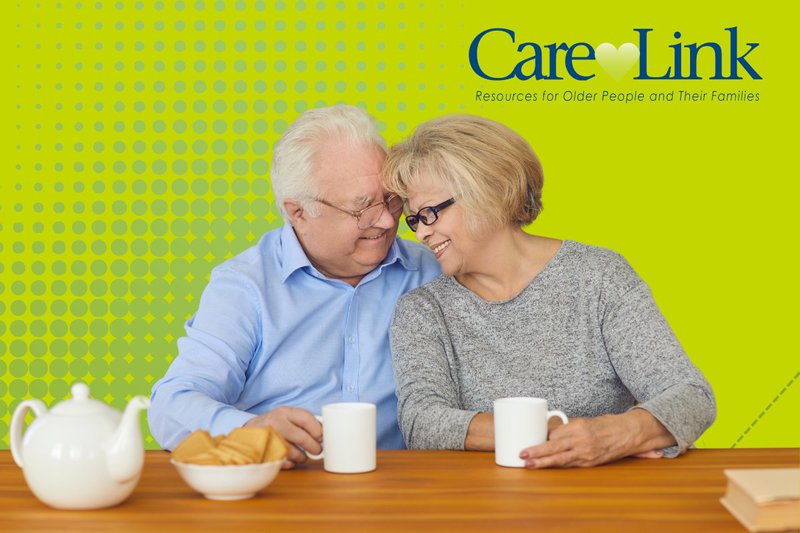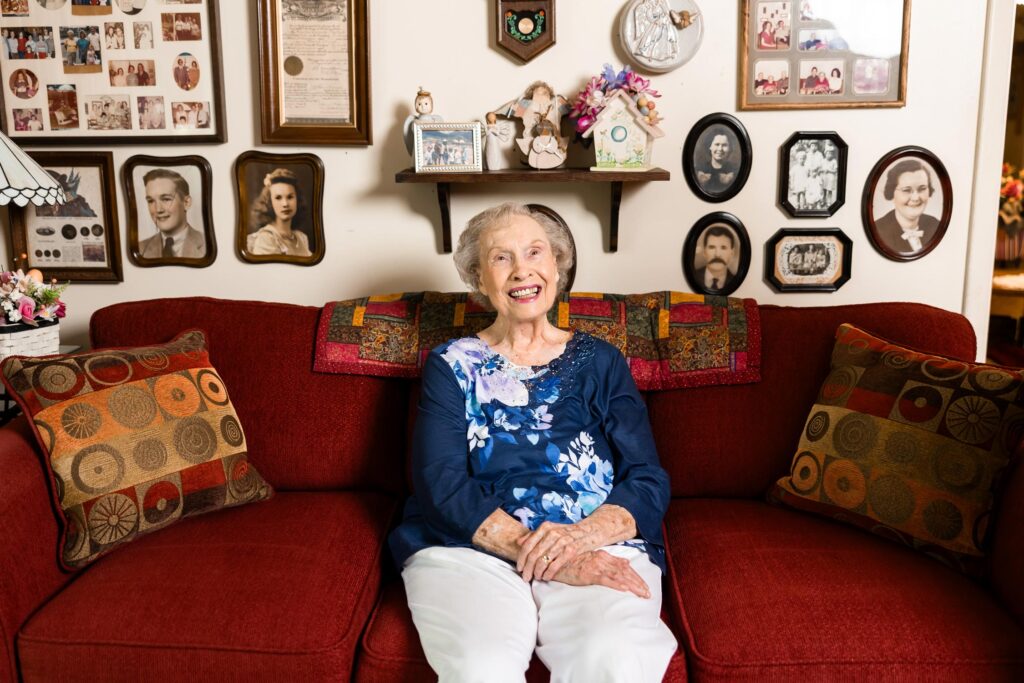Do you want your aging parent to stay in the home they love? You're not alone. Many older adults choose to age in place, but is it the best plan for your family? CareLink helps caregivers like you weigh the real benefits, risks, and costs. We’ll cover what aging in place means, how to make it safe, and whether it meets your loved one’s needs.
Key Takeaways:
- Aging in place means seniors live at home with changes that support safety and independence.
- Benefits include more control over daily life, emotional comfort, lower stress, and routine physical activity.
- Key safety upgrades: grab bars (toilet/showers), non-slip flooring, better lighting, and clearing clutter.
- Kitchen and bathroom improvements: walk-in showers, raised toilets, pull-out shelves, and assistive appliances.
- Repair costs to make a home safe can vary heavily depending on what is being done. Help is available through HUD, Medicaid waivers, PACE, and nonprofit support.
- Certified professionals like CAPS (Certified Aging in Place Specialist) and occupational therapists help guide home improvements for aging needs.
- Supportive technology includes smart lights, voice assistants, alert systems, and appliances with automatic shutoff.
- In-home care ranges from help with food and hygiene to skilled nursing or live-in assistance.
- Community support includes senior centers, public transit, and programs from groups like AARP and CareLink.
- Top concerns include isolation, falls, and cooking hazards—addressed through home planning, tools, and social ties.

Aging in Place: A Safe, Comfortable, and Empowering Way to Grow Older
Aging in place means choosing to remain in your own home as you grow older—with the right care, tools, and adjustments to stay safe, healthy, and independent. For many, it’s not just a preference; rather, it’s a pathway to preserving autonomy and dignity. This lifestyle supports the ability to live on your own terms, in a space filled with comfort and familiarity.
Furthermore, for countless seniors, it’s more than just staying put. It’s about maintaining routines, relationships, and the feeling of being truly at home.
Why Aging in Place Matters for Older Adults
Most seniors prefer aging in place because it allows them to remain surrounded by what they know and love. Indeed, familiar homes reduce stress and support emotional well-being. You sleep in your own bed, enjoy your garden, keep your pet nearby, and continue your daily rhythms.
Consequently, this way of living gives older adults more control over their environment. Instead of adapting to a new facility with unfamiliar rules and routines, they get to decide how they live each day.
Emotional and Mental Health Benefits of Staying At Home
Living in a familiar place supports emotional stability and mental clarity. Additionally, regular surroundings reduce anxiety and confusion. For those with memory challenges, daily routines and familiar objects can help preserve cognitive function.
Moreover, being close to neighbors, local parks, and community spots help prevent isolation. According to AARP, 90% of adults over 65 want to stay in their homes. That says a lot about how important this choice is.
Physical Health Is Supported Through Natural Movement
When aging at home, physical health often improves through natural activity. Tasks like walking to the mailbox, making meals, or tending to plants promote joint health and balance. In turn, this helps reduce the risk of falls or immobility.
Because seniors sleep, eat, and relax better in spaces they trust, their heart, brain, and overall health often benefit. Even better, with the right tools—like grab bars or smart lighting—homes can adapt to changing needs.
Home Modifications Make Aging in Place Safer
A few simple updates can make a big difference. To prevent falls, start by:
- Removing clutter and loose rugs
- Taping down cords
- Adding nightlights or motion-sensor lights in bedrooms, hallways, and bathrooms
Furthermore, installing grab bars in bathrooms, near stairs, and anywhere extra balance is helpful. Always use screw-mounted bars anchored into wall studs for maximum safety.
When it comes to flooring, opt for non-slip vinyl or rubber. Avoid deep-pile carpets or glossy tiles. If needed, update one room at a time. Use resources like the AARP HomeFit Guide to plan each change.
Bathrooms and Kitchens Can be Remodeled for Comfort and Safety
In the bathroom:
- Add walk-in, step-free showers
- Place a seat and handheld sprayer inside
- Install toilet risers and grab bars
- Use non-slip strips on the floor
- Swap twist knobs for lever handles
In the kitchen, consider the following:
- Lower shelves for easier reach
- Add pull-out trays in cabinets
- Use D-shaped handles
- Improve lighting under cabinets
- Install voice-activated lights and smart appliances
Finally, consider smart stoves that turn off automatically and fridges that send alerts if left open. These tools add peace of mind for both users and their families.
Financial Resources Can Help Fund Home Updates
Many upgrades cost less than expected. While a full remodel might range from $3,000 to $25,000, smaller changes like grab bars or lighting often cost under $500.
Funding options include:
- Local housing programs: Many cities and counties offer free or low-cost safety upgrades.
- Habitat for Humanity: They offer home repair programs for seniors.
- HUD Section 202 Program: This helps low-income seniors with safe housing.
- PACE (Program of All-Inclusive Care for the Elderly): It provides care and support in some areas.
- Medicaid waivers: In some states, these also cover in-home care and safety improvements.
- Reverse mortgages: These may help some homeowners tap into equity for updates (consult a financial advisor first).
Explore options through your local Area Agency on Aging or call CareLink.
Certified Professionals Can Help You Plan Safely
Certified Aging in Place Specialists (CAPS) are specially trained to help make homes safer and more accessible. For instance, they may suggest wider doorways, better lighting, and safer bathrooms—all tailored to your needs.
Occupational therapists, on the other hand, evaluate how you move and suggest tools or changes to support daily tasks. Moreover, they often work alongside CAPS to ensure your home promotes health and independence. To find trusted experts, visit the National Association of Home Builders CAPS directory or consult your doctor for a referral.
Smart Technologies Increase Safety and Confidence
Smart home tools are making aging in place easier than ever.
Helpful tools include:
- Voice assistants: (Amazon Alexa, Google Home): Set reminders, make calls, control lights
- Smart lights: Turn on automatically as you enter a room
- Video doorbells: See and speak to visitors without moving
- Medical alert systems: Call for help with one button; some detect falls automatically
- Pill dispensers with alarms: Ensure medication is taken on time
- Robot vacuums and touch faucets: Reduce physical strain
Start with one or two devices and build over time. These tools are practical, affordable, and easy to use.
Long-Term Planning Makes Aging in Place Sustainable
A good plan includes:
- Safety checklist: Stairs, lighting, bathroom access
- Care plan: Who helps and how often
- Financial review: What’s covered and what’s needed
- Transportation plan: Rides to stores, doctors, or social events
Start preparing while you’re healthy. Early planning means fewer surprises and more flexibility.
Use guides like the AARP HomeFit tool to create a room-by-room plan. Keep documents organized and share plans with family or caregivers.
Communities Can Support Aging in Place Too
It’s not just about the home—it’s also about the neighborhood. Communities that support seniors often have:
- Safe sidewalks and ramps
- Public transit
- Parks and recreation centers
- Local clinics and grocery stores
Programs like AARP Livable Communities help towns improve accessibility and safety for seniors. Local senior centers and aging resources like CareLink may also offer meals, classes, and in-home support to help older adults stay active and independent.
When people and policies work together, aging in place becomes more possible for everyone.
Managing Common Challenges at Home
While aging at home has many benefits, it also brings challenges. These include:
- Isolation: To prevent it, stay in touch with family and consider joining local or online groups.
- Fall risk: Therefore, use grab bars, improve lighting, and wear supportive shoes.
- Medication errors: To minimize these, use pill sorters with alarms or smart dispensers.
- Emotional health: In addition, seek support from counselors and peer groups, or engage in creative outlets.
With careful planning, most challenges can be effectively reduced or prevented.
Let’s Talk About Your Aging in Place Plan
Contact CareLink to Get Personalized Support
Whether you're just beginning or ready to take the next step, CareLink is here to help. We offer guidance, resources, and personalized support for families planning home-based aging. From safety tips to caregiving options, we’re ready to walk with you.
Contact us today to start building your aging in place plan with confidence.
Staying at home as you age is about more than comfort—it’s about maintaining identity, dignity, and control. With smart planning, supportive services, and a strong community, aging in place can be both safe and fulfilling. Take one step at a time, ask for help when needed, and remember: your home should be a place where you continue to thrive.





